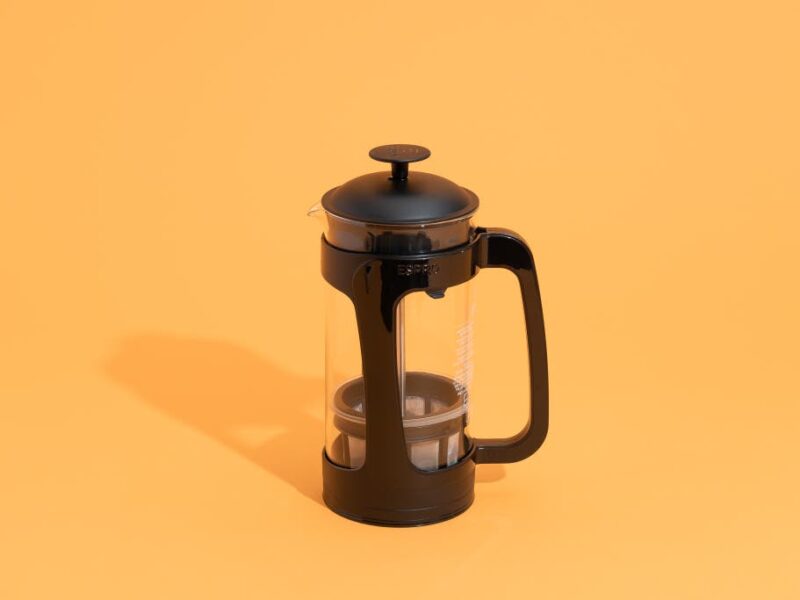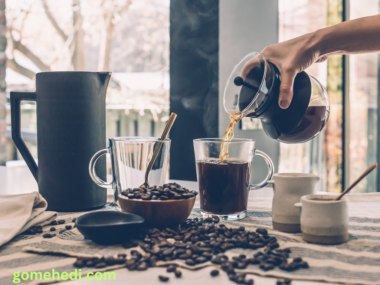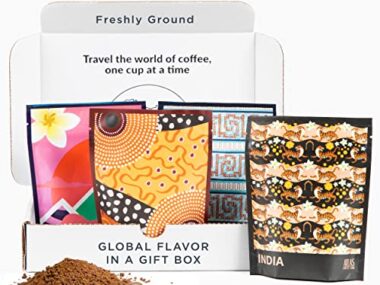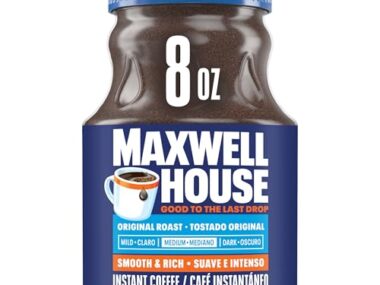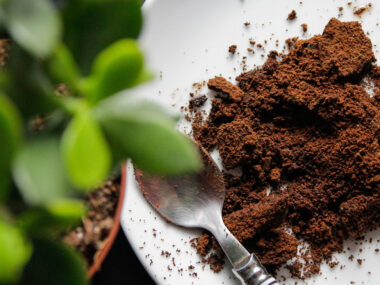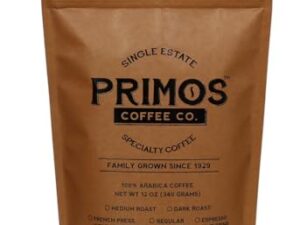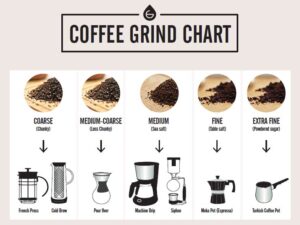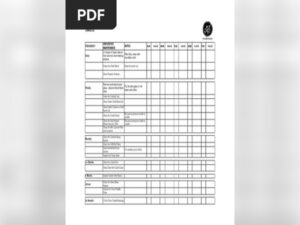For a perfect cup of French press coffee, the right coffee powder is key. If you’ve ever wondered which coffee powder is best for French press, understanding grind size and freshness makes all the difference.
Finding the best coffee powder for your French press can be a bit tricky. The French press requires a specific grind size and flavor profile to bring out the best in your coffee. Some coffee powders can make your drink too bitter or too weak.
The grind size should be coarse and consistent. This ensures the coffee extracts properly without becoming over-extracted or muddy. In this guide, we will explore what makes a coffee powder ideal for French press brewing. We will help you understand the characteristics to look for and provide some top recommendations. Whether you are a coffee newbie or a seasoned barista, this guide will help you enjoy a perfect cup every time.

Credit: cafely.com
Top Coffee Varieties
When choosing the best coffee powder for your French press, the type of coffee beans you select makes a big difference. There are many varieties to consider, each with unique flavors and characteristics. Here, we explore the top coffee varieties, focusing on Arabica and Robusta beans.
Arabica Beans
Arabica beans are highly popular among coffee lovers. They make up about 60% of the world’s coffee production. These beans are known for their smooth, rich flavor and pleasant aroma. Here are some key points about Arabica beans:
- Flavor: Arabica beans offer a wide range of flavors, from sweet and fruity to nutty and chocolatey.
- Acidity: They have higher acidity, which gives a bright and vibrant taste.
- Growing conditions: These beans grow best in higher altitudes and cooler climates.
- Price: Arabica beans are usually more expensive than other varieties.
Here is a table summarizing the characteristics of Arabica beans:
| Characteristic | Description |
|---|---|
| Flavor | Sweet, fruity, nutty, chocolatey |
| Acidity | High |
| Growing Conditions | High altitudes, cool climates |
| Price | Higher |
Arabica beans are perfect for those who enjoy a complex and refined taste in their coffee. They are ideal for a French press due to their rich flavor profile.
Robusta Beans
Robusta beans are the second most popular coffee variety. They make up about 40% of global coffee production. These beans are known for their strong and bold flavor. Here are some key points about Robusta beans:
- Flavor: Robusta beans have a stronger, more bitter taste compared to Arabica.
- Acidity: They have lower acidity, resulting in a heavier body.
- Caffeine content: Robusta beans contain more caffeine than Arabica beans.
- Growing conditions: These beans grow well in lower altitudes and warmer climates.
- Price: Robusta beans are generally more affordable.
Here is a table summarizing the characteristics of Robusta beans:
| Characteristic | Description |
|---|---|
| Flavor | Strong, bitter |
| Acidity | Low |
| Caffeine Content | Higher |
| Growing Conditions | Low altitudes, warm climates |
| Price | Lower |
Robusta beans are great for those who prefer a strong and intense coffee experience. Their bold flavor makes them a good choice for a French press, providing a rich and robust cup of coffee.
Grind Size Matters
Choosing the right coffee powder for your French Press can transform your morning routine. The grind size of coffee plays a crucial role in determining the taste and aroma. For a perfect brew, understanding how grind size impacts the extraction process is key. Let’s delve into why grind size matters and explore the benefits of coarse and medium grind coffee powders.
Coarse Grind Benefits
A coarse grind is often recommended for French Press coffee makers. This grind size resembles sea salt and is ideal for full immersion brewing. Why choose a coarse grind? Here are some reasons:
- Reduced bitterness: Coarse grinds allow for slower extraction, minimizing the bitter compounds.
- Enhanced flavors: Larger particles preserve the complex flavors of coffee beans.
- Less sediment: Coarse grounds are easier to filter, resulting in a cleaner cup.
Using a coarse grind also helps in controlling the brewing time. A perfect balance between brewing time and grind size ensures a rich and smooth coffee.
| Coarse Grind Features | Impact on Coffee |
|---|---|
| Large particle size | Slow extraction, balanced flavors |
| Reduced surface area | Less bitterness |
For those who love a robust, flavorful cup, a coarse grind is a wise choice. It captures the essence of the coffee without overwhelming bitterness.
Medium Grind Considerations
While the coarse grind is popular, some coffee enthusiasts opt for a medium grind. This grind size is similar to granulated sugar and offers a different experience. What should you consider with medium grind?
- Quicker extraction: Medium grinds extract faster, which can lead to stronger flavors.
- Balanced acidity: The finer particles can bring out more acidic notes.
- Potential sediment: Medium grinds may leave more sediment in the cup.
Medium grind coffee is versatile and can adapt to different brewing methods. A shorter brew time can enhance the coffee’s boldness, but it requires careful monitoring.
Here’s a comparison:
| Medium Grind Features | Impact on Coffee |
|---|---|
| Moderate particle size | Faster extraction, bolder taste |
| Increased surface area | Enhanced acidity |
For those seeking more intensity, a medium grind can offer a different profile. It requires attention to detail but rewards with a unique cup.
Flavor Profiles
Choosing the best coffee powder for a French Press can be a delightful journey through various flavor profiles. The French Press brewing method enhances the coffee’s natural flavors, making it essential to pick the right coffee grounds. Let’s explore the different flavor profiles to determine which coffee powder suits your taste best.
Nutty And Fruity
For those who enjoy a coffee with a nutty and fruity flavor profile, choosing the right beans is crucial. These coffee powders often come from regions like Ethiopia, Kenya, and Central America. They offer a pleasant and complex taste, perfect for a refreshing morning brew.
Here are some characteristics of nutty and fruity coffee powders:
- Light to Medium Roast: These roasts preserve the beans’ natural flavors.
- Aroma: Hints of berries, citrus, and nuts.
- Taste: Sweet, with a balanced acidity.
When brewing nutty and fruity coffee in a French Press:
- Use coarsely ground coffee to avoid over-extraction.
- Steep the coffee for about 4 minutes to extract the optimal flavors.
- Press down the plunger slowly to avoid disturbing the grounds.
Here is a table summarizing some popular nutty and fruity coffee options:
| Brand | Origin | Flavor Notes |
|---|---|---|
| Blue Bottle Coffee | Ethiopia | Blueberry, Lemon, Nutty |
| Stumptown Coffee | Kenya | Blackberry, Citrus, Nutty |
| Peet’s Coffee | Costa Rica | Almond, Cherry, Sweet |
Bold And Earthy
If you prefer a coffee with a bold and earthy flavor profile, look for beans from regions like Sumatra, Brazil, and Indonesia. These coffees are rich, full-bodied, and perfect for those who enjoy a strong cup.
Key features of bold and earthy coffee powders include:
- Dark Roast: This roast level brings out the deep, rich flavors.
- Aroma: Notes of chocolate, spices, and earth.
- Taste: Bittersweet, with low acidity.
Brewing bold and earthy coffee in a French Press:
- Opt for coarsely ground coffee to prevent a muddy texture.
- Steep for 4 to 5 minutes for a full extraction.
- Press the plunger steadily to ensure a smooth cup.
Here is a table summarizing some popular bold and earthy coffee options:
| Brand | Origin | Flavor Notes |
|---|---|---|
| Death Wish Coffee | Indonesia | Chocolate, Spices, Bold |
| Lavazza | Brazil | Dark Chocolate, Earthy, Intense |
| Intelligentsia | Sumatra | Earthy, Herbal, Deep |
:max_bytes(150000):strip_icc()/__opt__aboutcom__coeus__resources__content_migration__serious_eats__seriouseats.com__images__2014__07__20140714-french-press-side-bdb5df539e33491d8a4b13f625256844.jpg)
Credit: www.seriouseats.com
Freshness Is Key
Brewing the perfect cup of French press coffee requires more than just technique. One crucial element is the freshness of the coffee powder. Freshness affects the flavor, aroma, and overall enjoyment of your coffee. The fresher the coffee, the more vibrant and delightful the experience. Let’s explore why freshness is vital and how you can ensure it in your French press coffee.
Roast Date Importance
The roast date of coffee beans is a key factor in determining freshness. Freshly roasted coffee beans are full of flavor and aromatic oils that contribute to the coffee’s taste.
Understanding the roast date can make a significant difference in your coffee experience. Here’s why:
- Flavor Retention: Freshly roasted beans retain their oils and flavors. Stale beans lose these essential components.
- Aroma: The aroma is most potent shortly after roasting. It diminishes with time.
- Quality Assurance: Knowing the roast date ensures you aren’t buying old, less flavorful beans.
To make the most of your coffee, aim to use beans within 2-4 weeks of the roast date. This window ensures that the coffee powder is at its peak freshness.
Consider this simple table for reference:
| Time Since Roast | Freshness Level |
|---|---|
| 0-2 weeks | Optimal freshness |
| 2-4 weeks | Good freshness |
| 4+ weeks | Declining freshness |
Storage Tips
Proper storage of coffee powder is essential to maintain its freshness. Exposure to air, moisture, heat, and light can degrade the quality of your coffee.
Here are some effective storage tips:
- Airtight Containers: Use containers that seal tightly. This prevents air from spoiling the coffee.
- Cool, Dark Place: Store coffee away from sunlight and heat sources. A pantry or cupboard is ideal.
- Avoid Refrigeration: Fridges can introduce moisture. This affects the flavor negatively.
- Buy in Small Batches: Purchase amounts you can consume in a few weeks. This ensures you always have fresh coffee.
Implementing these storage practices helps in maintaining the freshness of your coffee powder. It keeps the flavors locked in, providing a rich and aromatic brew every time you use your French press.
Single-origin Vs Blends
The French Press, known for its rich and full-bodied brew, relies heavily on the type of coffee powder used. Choosing between single-origin and blends can be a delightful journey for coffee enthusiasts. Single-origin coffee comes from a specific region, offering unique flavors. Blends mix beans from different regions for a more balanced taste. Each choice brings its own set of qualities, making the decision exciting yet challenging.
Unique Characteristics
Single-origin coffees are like a passport to different parts of the world. Each region imparts its own distinct flavors and aromas. This is due to the soil, climate, and altitude where the beans are grown.
- Distinct Flavors: A single-origin Ethiopian coffee might offer bright, fruity notes.
- Traceability: Coffee aficionados enjoy knowing the exact farm their coffee comes from.
- Purity: No mixing means the coffee’s natural character shines through.
On the other hand, blends are like a well-rehearsed symphony. They combine beans from various regions to achieve a harmonious balance. This results in a consistent flavor profile, which can appeal to those who prefer a steady taste in their cup.
| Aspect | Single-Origin | Blends |
|---|---|---|
| Flavor Profile | Unique and varied | Balanced and consistent |
| Complexity | Simple, clear notes | Complex, layered notes |
Balanced Flavors
Blends are crafted to offer a balanced flavor profile, appealing to a wide range of palates. By mixing beans from different regions, roasters can fine-tune the taste to perfection.
Blends often include beans with complementary flavors, such as combining a nutty Brazilian coffee with a fruity Colombian. This results in a smoother and more satisfying cup.
Single-origin coffees, while distinct, may not always offer the balance found in blends. They excel in showcasing the unique attributes of their origin. Yet, some may find their flavors too intense or one-dimensional.
- Consistency: Blends provide a reliable taste with every brew.
- Versatility: Perfect for various brewing methods, not just the French Press.
- Smoothness: The combination of beans can soften any harsh notes.
Ultimately, choosing between single-origin and blends depends on personal preference. Whether you crave a unique experience or a balanced cup, both have much to offer.
:max_bytes(150000):strip_icc()/__opt__aboutcom__coeus__resources__content_migration__serious_eats__seriouseats.com__images__2014__07__20140714-french-press-grinds-c47e07fb99db451595f519ca964348da.jpg)
Credit: www.seriouseats.com
Popular Brands
Choosing the best coffee powder for a French Press can elevate your brewing experience. It’s important to select high-quality beans for the perfect cup. Popular brands offer a variety of flavors, from rich dark roasts to delicate light blends. Some brands focus on local craftsmanship, while others provide international favorites. Exploring these options can help you find the right choice for your taste buds and brewing style.
Local Roasters
Local roasters are cherished for their unique flavors and community-focused approach. They source beans from nearby farms, ensuring freshness and quality. Supporting local roasters brings a personalized touch to your coffee experience.
- Freshness: Beans are often roasted weekly, ensuring optimal flavor.
- Sustainability: Many local roasters use eco-friendly practices.
- Community: Buying local supports the local economy and farmers.
Here’s a quick look at some popular local roasters:
| Roaster Name | Location | Popular Blend |
|---|---|---|
| Blue Bottle Coffee | California | Three Africans |
| Stumptown Coffee Roasters | Oregon | Hair Bender |
| Intelligentsia Coffee | Illinois | Black Cat Classic Espresso |
International Favorites
International coffee brands offer diverse flavors and blends. They bring global tastes to your cup, allowing you to explore different regions and cultures. These brands often have a rich history and large-scale production.
Some international favorites include:
- Lavazza: Known for its Italian blends, Lavazza offers a rich and smooth taste.
- Illy: With a focus on quality, Illy provides a balanced and aromatic experience.
- Starbucks: Famous for its dark roast, Starbucks delivers bold flavors.
These brands often use advanced technology for consistent roasting and packaging. They offer a wide range of blends suitable for French Press. Exploring international brands can add variety and excitement to your coffee ritual.
Brewing Techniques
Choosing the right coffee powder is essential for a delightful French Press experience. But the secret to unlocking rich flavors lies in mastering the brewing techniques. These techniques can significantly impact the taste and aroma of your coffee. Understanding key factors like water temperature and brewing time can elevate your morning ritual to a sensory delight. Dive into the details below to ensure your French Press delivers the perfect cup every time.
Water Temperature
Water temperature plays a crucial role in the brewing process. The right temperature ensures the coffee grounds release their full flavor and aroma. Here’s how you can get it just right:
- Ideal Range: Aim for a water temperature between 195°F and 205°F (90°C to 96°C).
- Why It Matters: Too hot, and you risk a bitter taste. Too cold, and your coffee might turn out flat.
- Measuring: Use a thermometer for accuracy. Or boil water and let it sit for 30 seconds before pouring.
Consider the following table for a quick reference:
| Water Temperature (°F) | Flavor Profile |
|---|---|
| Below 195°F | Mild, lacking depth |
| 195°F – 205°F | Optimal flavor extraction |
| Above 205°F | Bitter, over-extracted |
Using the right water temperature not only enhances the taste but also preserves the subtle notes of your coffee blend.
Brewing Time
The brewing time is another critical factor that affects the taste of your coffee. Here’s why timing is everything:
- Standard Duration: Let your coffee steep for about 4 minutes.
- Impact of Timing: Shorter brewing can result in weak coffee. Longer brewing might make it too strong or bitter.
- Consistency: Use a timer to ensure your coffee steeps for exactly 4 minutes.
For a detailed understanding, refer to the table below:
| Brewing Time (minutes) | Outcome |
|---|---|
| Less than 3 minutes | Under-extracted, weak |
| 4 minutes | Balanced, flavorful |
| More than 5 minutes | Over-extracted, bitter |
Brewing your coffee for the right amount of time ensures a perfect balance between strength and flavor.
Personal Preferences
Choosing the best coffee powder for a French Press is a journey. Each person has unique tastes. Some like a strong, bold flavor. Others prefer a mild, smooth cup. Personal preferences play a big role in this decision. Understanding what you like can lead you to the perfect choice. Explore different types, origins, and flavors. This can help you find the best fit for your morning brew.
Taste Testing
Taste testing is an exciting way to discover your favorite coffee powder. Try various types to see what suits you best. Begin by sampling different origins like Colombian, Ethiopian, or Brazilian. Each offers unique flavors and aromas.
- Colombian: Known for its balanced flavor and mild acidity.
- Ethiopian: Offers a fruity and wine-like taste.
- Brazilian: Provides a nutty and chocolatey flavor.
Consider organizing a taste test with friends. This can make the process fun and social. Use a simple table to compare notes:
| Coffee Type | Flavor Notes | Rating |
|---|---|---|
| Colombian | Balanced, Mild Acidity | 8/10 |
| Ethiopian | Fruity, Wine-like | 9/10 |
| Brazilian | Nutty, Chocolatey | 7/10 |
Document your thoughts as you taste. This helps in identifying what you like. Remember, the key is to enjoy the process. Every sip is a step towards finding your perfect brew.
Experimenting With Blends
Experimenting with blends can enhance your French Press experience. Mixing different coffee types creates unique flavors. Start by blending beans from different regions.
- Try a Colombian and Ethiopian blend: This offers a balanced, fruity taste.
- Mix Brazilian with Colombian: Experience a nutty, smooth flavor.
- Combine Ethiopian and Brazilian: Discover a rich, chocolatey, and fruity mix.
Keep track of your experiments. Use a notebook or app to record each blend’s ratio and taste. This helps in recreating your favorite mix later.
Blending is not limited to regions. You can also mix roast levels. Combine a light and medium roast for a complex profile. Or try a medium and dark roast for a robust cup.
Experimenting encourages creativity. It helps in developing a personal coffee style. Enjoy the process and savor the results. Each blend is a new adventure in flavor.
Frequently Asked Questions
Which Ground Coffee Is Best For French Press?
Medium to coarse ground coffee is ideal for French press brewing. Opt for freshly roasted beans for rich flavor. Popular choices include Colombian, Ethiopian, and Sumatra blends. Ensure consistent grind size for optimal extraction. Quality brands like Lavazza, Starbucks, and Peet’s offer suitable options.
Can I Use Store-bought Ground Coffee In A French Press?
Yes, you can use store-bought ground coffee in a French press. Opt for a coarse grind to prevent clogging. Finely ground coffee may result in sediment in your cup. Choose a high-quality, fresh coffee for the best flavor. Adjust steeping time to suit your taste preferences.
Can You Use Coffee Powder In French Press?
Yes, you can use coffee powder in a French press. Ensure it’s coarse-ground for optimal flavor. Finer grinds can result in sediment and bitterness. For best results, use a ratio of 1:15 coffee to water. This method provides a rich and aromatic brew.
Can I Use Folgers In A French Press?
Yes, you can use Folgers in a French press. Coarsely grind the coffee for the best results. Enjoy a rich, flavorful brew.
Conclusion
Choosing the right coffee powder enhances your French press experience. Coarse grind works best. It prevents bitterness and sludge. Fresh beans offer richer flavors. Experiment with different brands and origins. Try Colombian or Ethiopian. Each brings unique taste notes. Remember, personal preference matters most.
Taste varies by individual. Adjust grind and brew time for desired strength. Consistent brewing yields better results. Enjoy your coffee journey. Savor each cup’s aroma. Share your favorites with friends. Discuss what works for you. Happy brewing!
